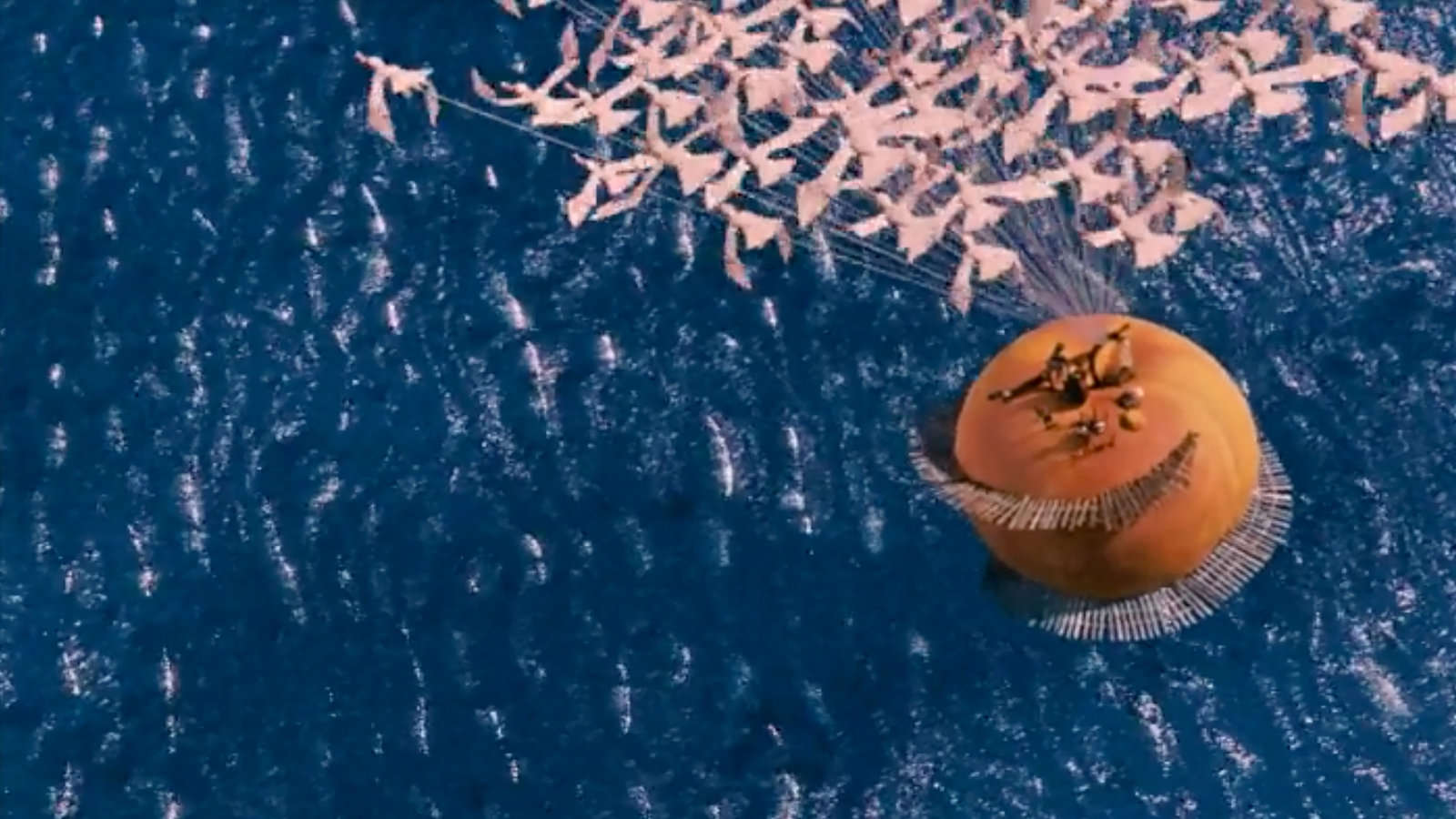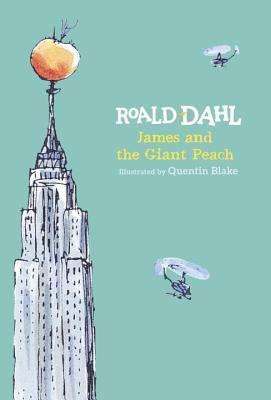Create a free profile to get unlimited access to exclusive videos, sweepstakes, and more!
How many seagulls would it really take to carry James and his giant peach across the Atlantic?

Roald Dahl is known for writing some of the most beloved children's stories of all time, but that wasn't always the case. For the first part of his career, Dahl wrote short stories for adults, the sorts of things that would later be adapted into episodes of Alfred Hitchcock Presents.
That all changed in 1961 with the publication of Dahl's first children's novel, James and the Giant Peach. Since its publication, James and the Giant Peach has sold more than 12 million copies and been adapted for television, stage, and screen.
The 1996 film adaptation directed by Henry Selick (The Nightmare Before Christmas, Coraline), which celebrates its 25th anniversary this week, wove together live-action with stop-motion animation and enjoys enduring classic status. As is the case with most of Dahl's stories, it leaves the reader (or viewer) with a sense of everyday magic and a reminder of what can be accomplished through the power of unusual friendships.
It also asks some important questions. Questions like: Is it possible for your parents to be consumed by an escaped zoo rhinoceros? Can alligator tongues possibly shrink to such minuscule sizes while adopting magical properties? And how many seagulls would it take to carry an oversized peach across an ocean, exactly?
We'll attempt to answer one of these questions, the rest we'll leave to the imagination.
HOW BIG IS THAT PEACH?
The precise size and weight of the titular giant peach are never overtly described but there are some clues, and we'll need a foundation to work from if we ever hope to lasso birds for a trans-Atlantic voyage.
The original text describes the peach as being “the size of a small house,” and at least as tall as the distance from the branch from which it grew to the ground. Illustrations from the book's various printings offer some visual clues but they aren't always consistent. An image of the peach perched atop the Empire State Building, for instance, shows the immense fruit taking up roughly one-third the length of the antenna.
At the time of the book's publication, the antenna measured at 222 feet (it was shortened when replaced in 1985), putting the peach's height at approximately 74 feet. More than a small house, to be sure.
The film offers a clearer look. We see a lot more of the peach compared to other recognizable objects, namely: James. He's a rather typical 7-year-old boy, if a little malnourished, and we can estimate his height as the average of 4 feet. Using James for scale, the height of the peach is estimated at somewhere between 15 and 20 feet. We'll go with 15 for the sake of the birds.
Now to determine its weight. The average peach is approximately 2.5 inches in diameter and roughly spherical. We can scale it up to 15 feet and get an estimate of the giant peach's volume.
Calculating the volume of a sphere involves a relatively simple calculation (or a Google search). That formula is four-thirds-pi multiplied by the radius cubed. Taking the radius of your average peach and plugging it into that formula provides a volume of 8.18 cubic inches. That same average peach weighs about 5 ounces or 140 grams. Dividing that by 8.18 gives us the mean weight of one cubic inch of peach as 0.61 ounces or roughly 17 grams.
There is, of course, some variance here. We aren't working with a perfect sphere and different species of peach might have different densities. Still, it's close enough for our purposes.
Our giant peach, standing tall at 15 feet, has a radius of 90 inches and a volume of 3,053,628 cubic inches, bringing its estimated weight to 1,862,713 ounces or roughly 52 million grams. When the numbers are crunched, that peach would weigh somewhere in the vicinity of 115,000 pounds.
A LOT OF FLOCKING BIRDS
The book actually gives us a number. Using silk from the spider and the silkworm, James lassos 501 seagulls to ferry them on their way. Given what we know about the weight of the peach, not to mention its passengers, each bird would be required to carry 230 pounds of peach. That's a lot to expect from animals who are fueled primarily by stale french fries and hate.
We're going to need an impressive flock of seagulls.
Despite stories of seagulls carrying off family dogs, they don't have much carrying capacity, although admittedly the exact carrying capacity of a seagull isn't well documented. We know flight requires generating lift in excess of an object or animal's weight. The amount of cargo a bird can carry is limited by wingspan and the amount of lift generated.
There are many species of seagull, weighing in between a few ounces and about 4 pounds. Giving the seagulls the benefit of the doubt, we'll say they're capable of carrying half their body weight for more than a few minutes.
If we assume the seagulls in question are of the larger variety, they'd max out at just under two pounds per bird. In order to lift the peach out of the water and away from the ravenous mouths of peach-loving sharks (mechanical or otherwise) we'd need at least 57,000 seagulls.
The truth is, there are other variables at play. The sustainable carrying capacity of a seagull is very likely much lower. Probably closer to a fraction of a pound. And they wouldn't be able to fly all the time — they'd need time to eat, drink, and sleep.
Cutting the sustained carrying capacity to half a pound and tripling the number in order to break the birds into flight shifts, James would need to lasso close to a million birds at a minimum, and that's being conservative.
Otherwise, those birds got a hold of a couple of those magic green crystals and were imbued with superior strength. The idea of superpowered seagulls is almost more frightening than aunts Sponge and Spiker. Almost.




























